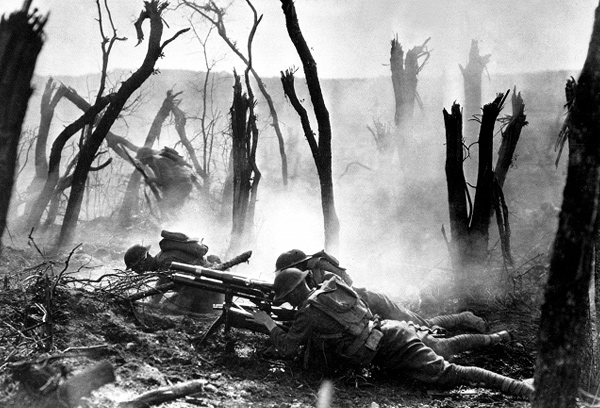
Source: Soldiers of Headquarters Company, 23rd Infantry Regiment, 2nd Infantry Division, U.S. Army.
The final year of the war brought more battles before an armistice was reached. As President Wilson declared his Fourteen Points of Peace, the war waged on between the Central Powers and the Allied Powers.
The battle that is sometimes referred to as the turning point for the Allied victory is the Battle of the Argonne Forest because this is the battle that changed the direction of the war allowing the Allies to defeat the German troops.
Look closely at the following photos from the Argonne Forest and take note of the environment of the battle. What do you observe that justifies this being the "turning point" battle?

Source: Soldiers of Headquarters Company, 23rd Infantry Regiment, 2nd Infantry Division, U.S. Army.
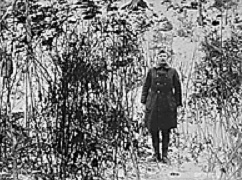
Source: Beware of entrance into a quarrel, Library of Congress
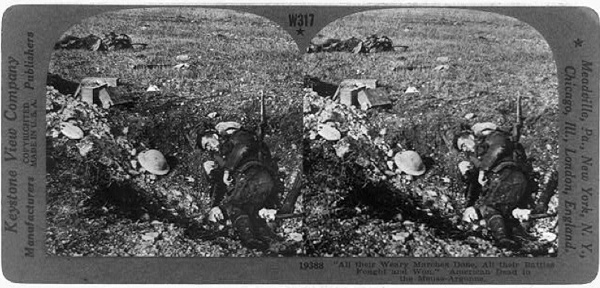
Source: 'All their weary marches done, all their battles fought and won.' American dead in the Meuse-Argonne, Library of Congress
Feeling the pressure from the Allied Powers, the Central Powers, namely the German troops, began to desert their posts. The end of the war was inevitable. An armistice was reached on the 11th day of the 11th month at 11 o'clock (November 11th). This ended the fighting, but the war was not officially declared over until the signing of the Treaty of Versailles in 1919.
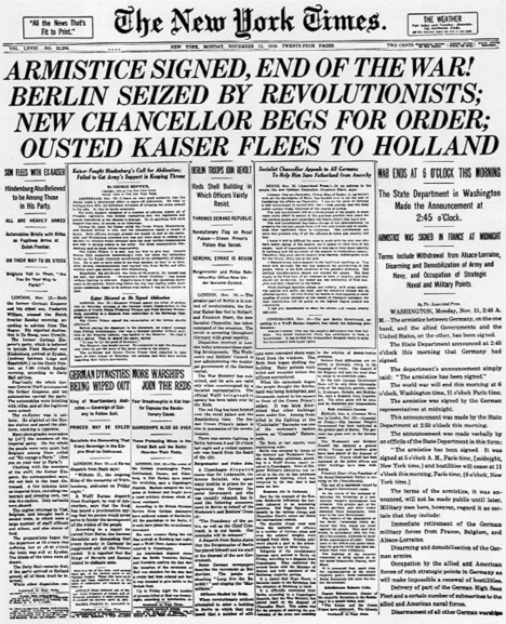
Source: New York Times – On this Day, 1111, New York Times
Based on this newspaper headline, how did the countries of the Central Powers react to the armistice?
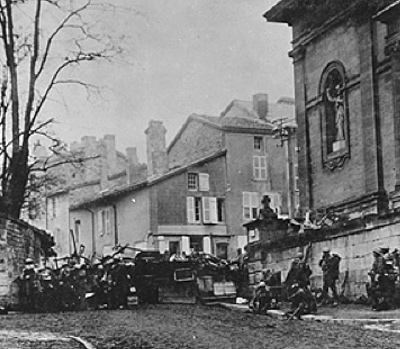
Source: Soldiers at Stenay, Office of Veteran Affairs
Soldiers wait outside of a church in France for the end of hostilities. This photo was taken at 10:58 a.m., on November 11, 1918, two minutes before the armistice ending World War I went into effect. This day was called Armistice Day and later it became known as the American holiday Veterans Day.
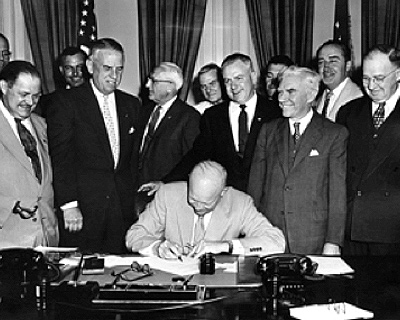
Source: Vet day History, Office of Veteran Affairs
In this photo, President Eisenhower is signing HR7786, changing Armistice Day to Veterans Day.